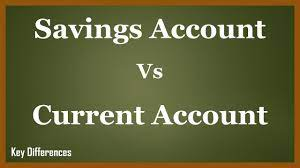Savings accounts and current accounts are designed for different purposes and have different features. Savings accounts cater to individuals who want to save whereas current accounts are made for regular transactions of firms and companies.
Savings accounts accrue higher interests than current accounts
They cater to individuals while current accounts are more suitable for companies and firms
Such accounts have a monthly transaction limit whereas current accounts don’t
The minimum balance requirement is lower in savings accounts than in current accounts
Savings Accounts
A savings account is designed with the primary purpose to help you save.
This type of account allows the holder to deposit money as is convenient, on which the holder can earn interest.
A Savings account may be opened by an individual or jointly and requires the holder to usually maintain a pre-specified amount as a minimum balance.
Interest rates earned on Savings Accounts range anywhere between 4% to 6%. These accounts do usually carry the facility of issuing cheques.
Savings Accounts
A savings account is designed with the primary purpose to help you save.
This type of account allows the holder to deposit money as is convenient, on which the holder can earn interest.
A Savings account may be opened by an individual or jointly and requires the holder to usually maintain a pre-specified amount as a minimum balance.
Interest rates earned on Savings Accounts range anywhere between 4% to 6%. These accounts do usually carry the facility of issuing cheques.
Savings Account v/s Current Account
A Savings account differs from a Current account in many ways and aspects. Both these accounts address different financial needs of the user, helping in better money management. Here are some of the major points based on which one can distinguish between a Savings and a Current Account.
Purpose
Savings Account: A Savings Account has been designed to encourage and promote savings
Current Account: Is designed to facilitate regular or frequent transactions.
Ideal For
Savings account the ideal choice for any individual who earns a steady or regular income like salaried employees. This type of account is also ideal for those who have any short-term financial goals to meet like a future vacation, financing a wedding, buying a car, etc.
The current account Is more suited for individuals who are required to carry out frequent money transfers like businessmen, firms, companies, organizations, public enterprises, etc.
Monthly Transactions
Savings Account: Banks offering the facility of a Savings account do usually put a limit on the maximum number of transactions that a holder can carry out in a month. The permissible limit without attracting any charge is usually anywhere between 3 to 5 transactions per month (financial and non-financial).
Current accounts: Do not have any limit on the maximum number of transactions that one can carry out. This is primarily because Current accounts serve the purpose of carrying out frequent transactions.
Interest
Savings Account: Will usually earn you an interest between 4% to 6% on a pre-specified basis. Since these accounts do not allow unlimited transactions, it is easier to accumulate more funds over a period of time.
Current Account: In the case of current accounts, banks usually do not provide any interest. This is due to the fluid nature of the account which allows frequent transactions. Minimum Balance
The minimum balance is the minimum amount of money that must always be in your account in order to prevent it from de-activating or lapsing.
For Savings accounts, the minimum balance required is usually low. However, for Current accounts, one may need to maintain a relatively higher amount as a minimum balance. Minimum Balance
The minimum balance is the minimum amount of money that must always be in your account in order to prevent it from de-activating or lapsing.
For Savings accounts, the minimum balance required is usually low. However, for Current accounts, one may need to maintain a relatively higher amount as a minimum balance.







No comments:
Post a Comment